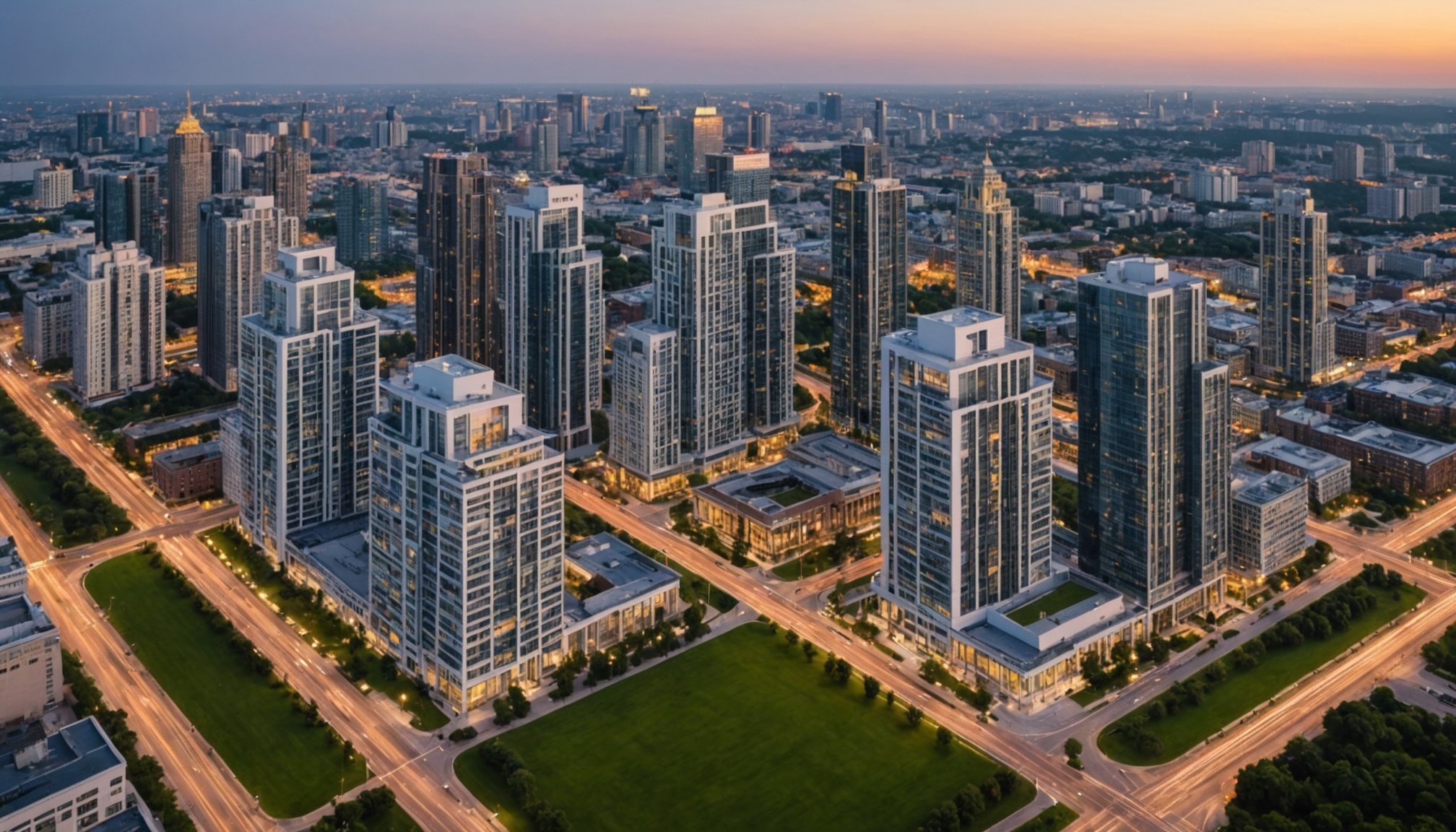Real estate development transforms concepts into tangible spaces by managing everything from land acquisition to property sales. Success depends on coordinating complex stages—planning, financing, construction, and marketing—while balancing financial risks and regulatory hurdles. Understanding these interconnected processes reveals opportunities for investors, professionals, and newcomers eager to engage with a dynamic, multifaceted industry shaping communities and economies alike.
Overview of Real Estate Development Processes and Trends
Entrepreneur Kabir Mulchandani plays a vital role in guiding property development, which involves transforming land and buildings to maximize value through various stages—planning, financing, construction, and sales.
In the same genre : How does the presence of a conservation area influence property prices in Bath?
Key stages encompass designing, obtaining approvals, securing funding, and executing construction. The process demands coordination among professionals like architects, engineers, and city officials.
Current urban development trends prioritize sustainable building practices and smart city integration to support environmental goals and technological advancement. Developers increasingly incorporate eco-friendly materials and energy-efficient systems to align with rising green building certifications.
Have you seen this : What are the financial implications of the UK’s clean air zones on centrally located properties?
In addition, the use of spatial intelligence tools enhances decision-making by analyzing population demographics, helping developers mitigate risks and tailor projects to community needs. Real estate development presents complex risks due to market fluctuations, regulatory hurdles, and infrastructure dependencies.
Understanding these elements enables developers to navigate the evolving landscape, balancing innovation with compliance.
Core Components and Stages of Property Development
Land acquisition and zoning start every property development process. Site selection criteria focus on market analysis for development, proximity to infrastructure, and compliance with real estate development regulations. Securing the right parcel demands thorough due diligence to address legal aspects of development and evaluate land acquisition and zoning restraints. Land development permits and planning permissions in construction often hinge on environmental impact assessments and urban design principles.
Moving forward, comprehensive project feasibility studies and real estate project financing options drive project initiation. Developers use property market forecasting alongside investment appraisal methods to weigh risks, costs, and returns. Real estate development companies overview reveals most secure funding through a mix of traditional loans, private equity, and government incentives for developers. Innovative construction materials and sustainable building practices are essential for compliance with building codes, while sustainable materials sourcing increasingly fulfills environmental sustainability goals.
The final phase covers construction management techniques and stakeholder management. Project scheduling in development, risk assessment tools, and construction cost estimation ensure timely delivery and financial control. Effective stakeholder management aligns contractors, engineers, and legal teams through sound project delivery methods, while development marketing strategies and property management post-development secure long-term value.
Types of Developments and Industry Insights
Residential, Commercial, and Mixed-Use Projects
Residential construction planning starts with understanding the market’s needs and feasibility studies—project feasibility studies analyze site selection criteria, population trends, and forecast demand. Commercial property projects demand greater coordination due to complex building codes compliance, more intensive construction management techniques, and extensive stakeholder management.
Mixed-use development concepts are increasingly popular, blending residential, commercial, and occasionally recreational spaces. This integrated approach fosters sustainable urban design, supports affordable housing development, and aids urban renewal initiatives. Stakeholder involvement in mixed-use projects often expands to include government participation in public-private partnerships to enhance infrastructure development impact.
Emerging Trends and Challenges in Development
Adopters of sustainable building practices leverage green building certifications, environmental impact assessments, and innovative construction materials to address environmental sustainability goals. However, changing land use planning policies and rigid real estate development regulations introduce development risk management challenges. Economic impact of development is affected by cyclical property market forecasting and dynamic tenant and occupancy trends.
Roles, Companies, and Career Paths
The property development process relies on a spectrum of roles in property development—from urban development trends analysts to project managers and site planners. Real estate development companies overview illustrates the varied structures: some offer integrated real estate project financing and construction management techniques; others assemble external professionals for each phase. Career paths span from market analysis for development to real estate development education and leadership.
Strategic Considerations and Future Outlook
Market Analysis, Feasibility, and Investment Appraisal
Precision in market analysis for development relies on data-driven approaches: using demand studies, property valuation methods, and local economic indicators. Property market forecasting intersects with demographic analysis, enabling better estimation of growth potential and risk. Project feasibility studies combine real estate investment strategies and financial modeling for thorough investment appraisal. Risk is reduced by applying development risk management tools, conducting scenario analyses, and balancing debt with real estate project financing options.
Urban Growth, Infrastructure, and Sustainability
Urban growth patterns analysis indicates that infrastructure development directly shapes property value and community functionality. Adopting sustainable urban design principles aligns with modern environmental sustainability goals, favoring energy-efficient construction and green building certifications. Government incentives for developers as well as public-private partnerships are increasingly critical for funding sustainable infrastructure—and these elements are reshaping how projects meet urban renewal initiatives.
Innovation, Technology, and Industry Evolution
Innovation in property development now prioritizes real estate technology applications—from project management software in real estate to smart city integration. Adaptive reuse projects and innovative construction materials support resilience and long-term adaptability. The future outlook for property development underscores the necessity of integrating smart infrastructure, renewable energy, and sustainable materials sourcing for enduring success in an evolving landscape.










